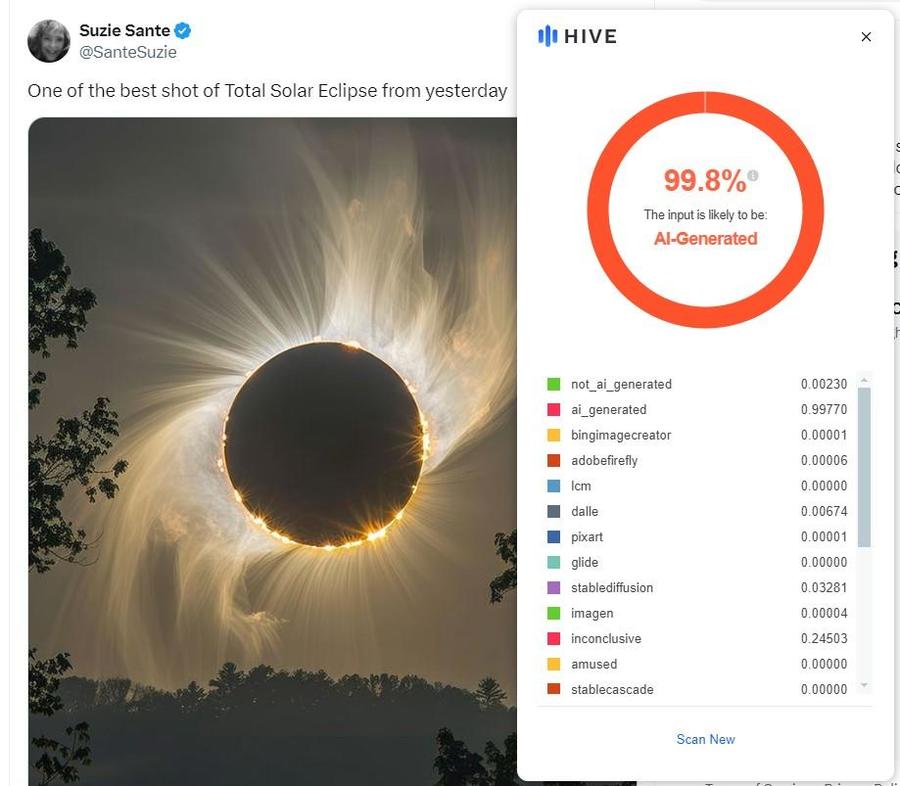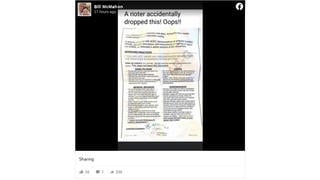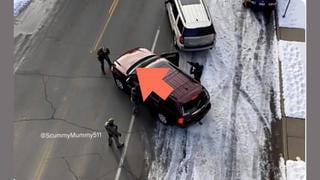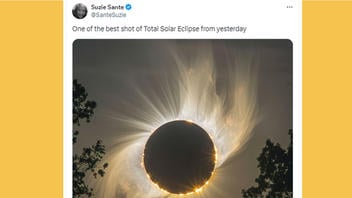
Is an image showing a dramatically swirling and sparkling corona over a wooded hillside a real photo of the April 8, 2024, total solar eclipse? No, that's not true: The AI detection tool from Hive Moderation rated this image as having a 99.8 percent likelihood of being AI-generated. Practical photography considerations also expose this as an impossible photo. Both a foreground and an astronomically distant corona that are sharply focused, as well as the exposure requirements, rule out the possibility this could be a real photo. Finally, as the sun set the total eclipse could only have been observed from the north Atlantic Ocean, not from land, so trees could not have been in the image.
The image appeared in a post on X (archived here) by @SanteSuzie on April 10, 2024. It was captioned:
One of the best shot of Total Solar Eclipse from yesterday
This is what the post looked like on X at the time of writing: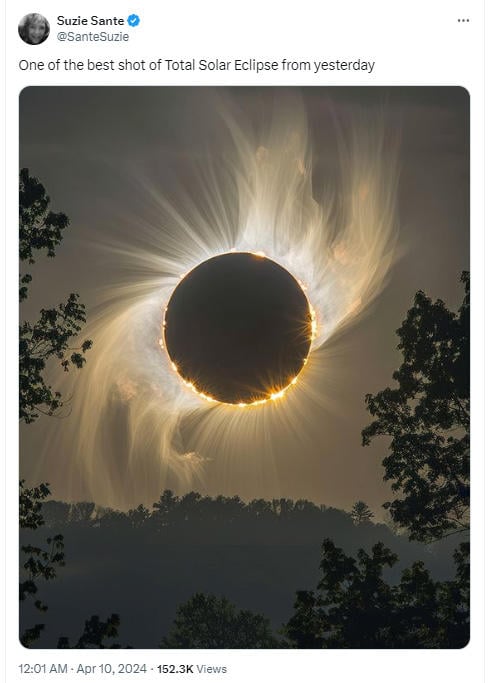
At first glance, there are clues that this image can not be real. The lack of credit to a photographer or an identified location are the first red flags. Hints to a potential location might be tied to the dense foliage and the sun's altitude. But a photo of a traffic jam in Maine after the eclipse shows that in early April, most deciduous trees in the Northeast had not developed their leaves. The total eclipse moved east as the day wore on, but the sun was still quite high in the sky when the moon's shadow slipped away from Gull Island, Newfoundland and Labrador, Canada, on a course across the north Atlantic Ocean. At the easternmost point of land to view the total eclipse, maximum totality occurred when the sun was 23 degrees above the horizon at 5:15 p.m. local time (3:45 p.m. EDT), 2½ hours before sunset.
The content moderation platform hivemoderation.com has an AI-generated content detection tool, as well as a Chrome browser extension. The screenshot below shows the extension's analysis of the image posted on X. Sometimes the tool can detect which AI specific program was used to create the image. In this instance that is inconclusive, but the image was determined to be AI-generated with high confidence.
(Source: X screenshot with Hive extension taken on Thu Apr 11 17:09:57 2024 UTC)
What a real corona image looks like
A photo of the April 20, 2023, solar eclipse corona in Exmouth, Australia, was shared on NASA's Astronomy Picture of the Day on April 2, 2024 (pictured below). The photo, captured and processed by Phil Hart, shows the delicate detail of the corona radiating from the sun, only visible once the sun is obscured by the moon during a total eclipse. Hart has a blog post about the work, equipment and planning that went into producing and then processing this image. When photographing the corona in detail, that is his only focus. One snapshot photo in Hart's blog shows the scene while he captured this image, his dedicated cameras, some landscape plants in the foreground and the solar eclipse high in the sky above. Although the eclipse shows up as just a fuzzy white dot, the PC viewing screens on his equipment show that the full eclipse is happening. The camera capable of taking the photo of the foreground can not simultaneously capture the delicate details of the corona.
(Source: Lead Stories composite image with philhart.com and apod.nasa.gov screenshots taken on Thu Apr 11 17:42:04 2024 UTC)
Additional Lead Stories fact checks debunking false claims about the 2024 eclipse can be found here.


